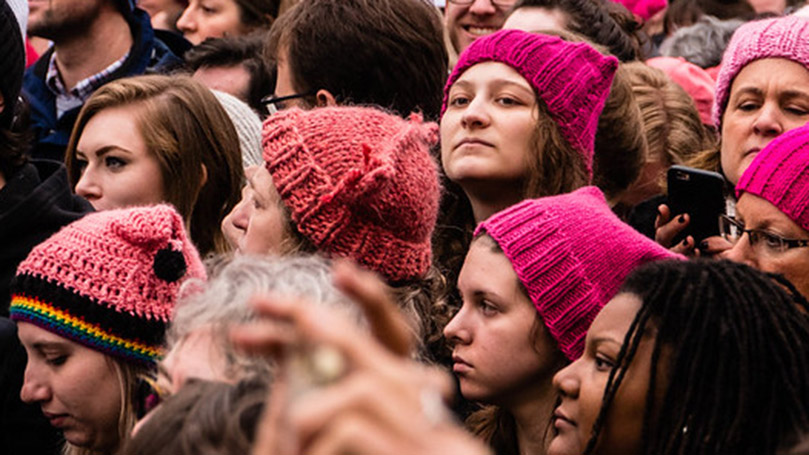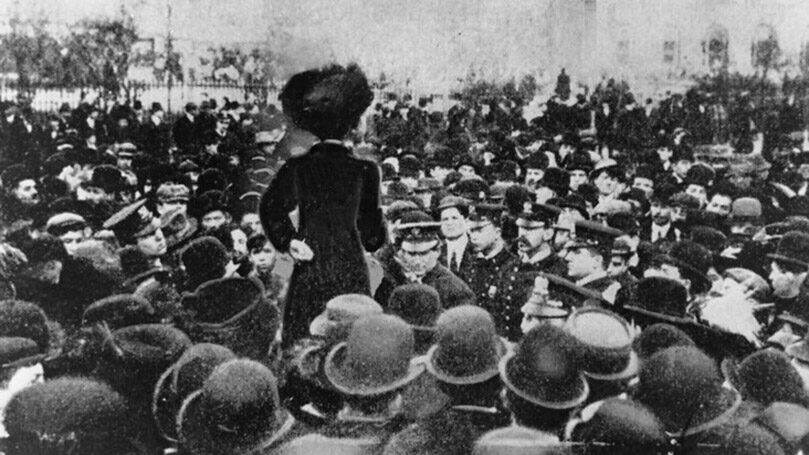
On March 8, International Women’s Day, we remember the past and recommit ourselves to the struggle for a better future for all women.
It was the courage of hundreds of women needle-trades workers that inspired International Women’s Day. They walked off the job for better wages and the right to vote in 1909, striking for 13 weeks in a bitter cold New York winter. At the Second International Conference of Socialist Women in 1910, German Communist Clara Zetkin proposed that a day be set aside each year for solidarity with women workers around the world. International Women’s Day has been commemorated since 1911, and since 1977 it has been recognized and celebrated by the United Nations.
Women have played an instrumental role in grassroots movements of all kinds, from peace to labor, environment, reproductive rights, and voting rights. And their role is growing. After Trump was elected, they led the fightback against his administration and the right wing, starting with the massive Women’s Marches the day after his inauguration in 2017. Then they ran for political offices in unprecedented numbers. For more than a decade, African American women headed multiple voting rights campaigns in Georgia, which led to the election of two progressive senators. Women participated in the teachers’ strike wave of 2018–19, winning better contracts, and the U.S. women’s soccer team recently won a settlement giving them equal pay.

Despite the progress women have made over the past century, many challenges remain: low wages, the threat to reproductive rights, and domestic violence, to name a few. Women earn 82 cents for dollar a man earns. Black and Latina women with bachelor’s degrees earn 65% less than white males with the same level of education. Caregiving, whether of pre-school children or the elderly, pays on average less than $14 an hour, and the work is dominated by women, especially women of color and immigrants. African American, Latina, and Native American women are often found in the lower rungs of the economy, and the pandemic-induced recession only worsened their situation.
Other challenges go beyond the economic. Racist violence has grown, as we’ve seen with the targeting of Asians since the pandemic began and the growing numbers of anti-Semitic attacks at synagogues. In violation of international law, the U.S. has denied immigrants their right to asylum at the U.S./Mexico border.
The growing assault on reproductive rights by states and the likelihood that the Supreme Court will reverse Roe v. Wade are alarming developments. A reversal of Roe will create inequalities based on where women live; poor women in states like Texas and Mississippi with current prohibitive abortion laws are already finding their health and economic welfare to be more precarious.
Despite women having secured the right to vote in 1920, and African American women in 1965 with the passage of the Voting Rights Act, women are woefully underrepresented in governance. In war, women and their children are disproportionately affected yet have no say in the conflicts and are mostly absent from the negotiating tables. In 2000 the United Nations Security Council passed Resolution 1325, which calls for nations to ensure women’s participation in negotiations, peacekeeping, and decision making during post-conflict reconstruction. The U.S. is a signatory.
Another area where women lack representation is in the U.S. Congress. Of the 192 countries ranked by the Inter-Parliamentary Union according to the number of female parliamentarians, the U.S. is in a dismal 73rd place. Only 28% of House seats and 24 of the 100 Senate seats are held by women.
Through decades of struggle, women have made extraordinary progress, but there is much work to be done. Women are crucial in the fight for democracy and equality. Indeed, without women’s full participation, victory is impossible.
The Communist Party USA will continue to struggle for equality for women in the economic, political, and social spheres — today and into a socialist future.
Women workers of the world, unite!
Images: Women’s march on Washington, John Flores (CC BY-SA 2.0); Mass rally during shirtwaist strike of 1909-10, Kheel Center (BY 2.0).


 Join Now
Join Now